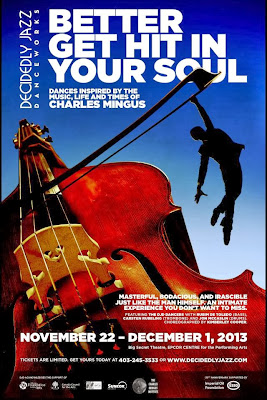I was going to post this on Monday but since it was Remembrance Day I decided to wait until today. I hope you all had a nice long weekend and for those of you who had a day off that you all took some time to remember the sacrifices so many have made for the greater good.
So now that you are here, get ready! Here's a ton of interesting things to check out from the wide reaches of the interweb:
- Canadian Jazz drummer Ted Warren has long been a huge influence on me. His creativity, dedication and mastery of the drums is astounding. There are very few people that I know of that have put in the time that Ted has on his instrument.
Here are couple great ones to check out. First, armed with only a single snare drum, Ted demonstrates the possibilities of improvising with only a single percussion instrument. Check out all the different sounds and textures he gets from one drum:
And while Ted shared this on his blog awhile ago, here it is again: an improvised solo drum set performance:
This is something that I've personally been toying around with for some time now myself and definitely lists as a future project on my own agenda. Not an easy task! (to do it well...anyways)
And Ted just posted this rare one today on his own fine blog
Trap'd of himself with bassist Mike Downes and Brad Turner on piano:
- Speaking of Canadian Jazz drummers: Here's a fine example of Toronto drummer Morgan Childs with Richard Whiteman's quartet in action from a recent hit at the Rex on Charlie Parker's "Relaxin' at the Camarillo":
I moved to Calgary shortly before Morgan moved to Toronto in 2009 but I've always been a fan of his drumming and swinging beat.
- There are lots of great things happening in the Canadian Jazz drumming world these days. My old friend, alto saxophonist Remi Bolduc recently brought both Dan Weiss and Ari Hoenig to Montreal to perform with his group "Random Masters":
Now THAT'S some serious rhythm to deal with!
- Thanks to the National Jazz Archive here's another interview with the great Mel Lewis to read:
http://www.nationaljazzarchive.co.uk/stories?id=71
- Marvin Bugalu Smith is a great drummer from Poughkseepsie, New York whose playing can be best described as a force of nature. Eventually I would like to take some lessons with this cat some day and hopefully hear him play live as well. Here's a nice feature on this incredible musician:
http://www.chronogram.com/hudsonvalley/marvin-bugalu-smith/Content?oid=2179829&fb_action_ids=592813780740682&fb_action_types=og.likes
- Rochester drummer Aaron Staebell is also up to great things these days. Aaron is regularly updating his website with many great solo drum set pieces. I really dig these and heard Aaron play a few times in Toronto awhile ago with Dave Restivo and Nick Ali. Check it out here:
http://aaronstaebell.tumblr.com
- A great piece of Jazz oral history with tuba/baritone saxophonist Howard Johnson recalling Tony Williams:
- Interested in learning a cool little phrase from Jeff Tain Watts? Dig this:
http://samnadel.blogspot.ca/2013/07/the-tain-phrase-with-video.html?showComment=1374441421802
- Jeff Hamilton has some great lessons and a series of interviews over here:
http://www.drummerszone.com/videos/channel/dz-6595-4718/jeff-hammertone-hamilton-jeff-hamilton's-sandlane-sessions/
- What am I listening to these days?
Peter Bernstein "Heart's Content" - Bill Stewart (drums)
Peter Bernstein with the Tilden Webb Trio "Live at the Cellar" - Jesse Cahill (drums)
Miles Davis "Bitches Brew" - Jack DeJohnette & Lenny White (drums)
Dexter Gordon "A Swingin' Affair" - Billy Higgins (drums)
Christian McBride "People Music" - Carl Allen & Ulysses Owens Jr. (drums)
Grant Stewart "Urban Tones" - Billy Drummond (drums)
Earl MacDonald "Mirror of the Mind" - Rogerio Boccato (percussion)
Mike Rud "Notes on Montreal" - Dave Laing (drums)
- Ethan Iverson over at
Do The Math has a great piece here remembering one of the all-time great B3 organ trio drummers. Donald Bailey:
http://dothemath.typepad.com/dtm/2013/10/donald-bailey.html
- The last words of wisdom today come from the great Milford Graves (via Tyshawn Sorey):
"I always tell people that being a musician is extremely important and if you are going to be a musician, you have to be responsible because people come to listen to you. You go to a restaurant to get some food and you depend on that chef or that cook to prepare some food that is not only going to taste good, but also be healthy to you. People come to see musicians with their ears. They are using their ears and asking you to put something in their ears. You have to KNOW what you are putting in their ears. In traditional times, a musician was required not only to know the instrument, but they were also doctors, healers. You never separated those two because you are dealing with people. You are dealing with the mind. You are dealing with bodies. You are dealing with the soul. When you try and separate those things, it is no good. Other than the physical thing, you have to have some internal content. You have to have some mind stuff. The only way you are going to get mind stuff is to know about PEOPLE. You have to know how people live. You have to know about culture, not only your own culture, but the whole multicultural concept because you are dealing with a multiplicity of people." - Milford Graves
All right. That's all I've got today. Have a great week and see you soon!
















